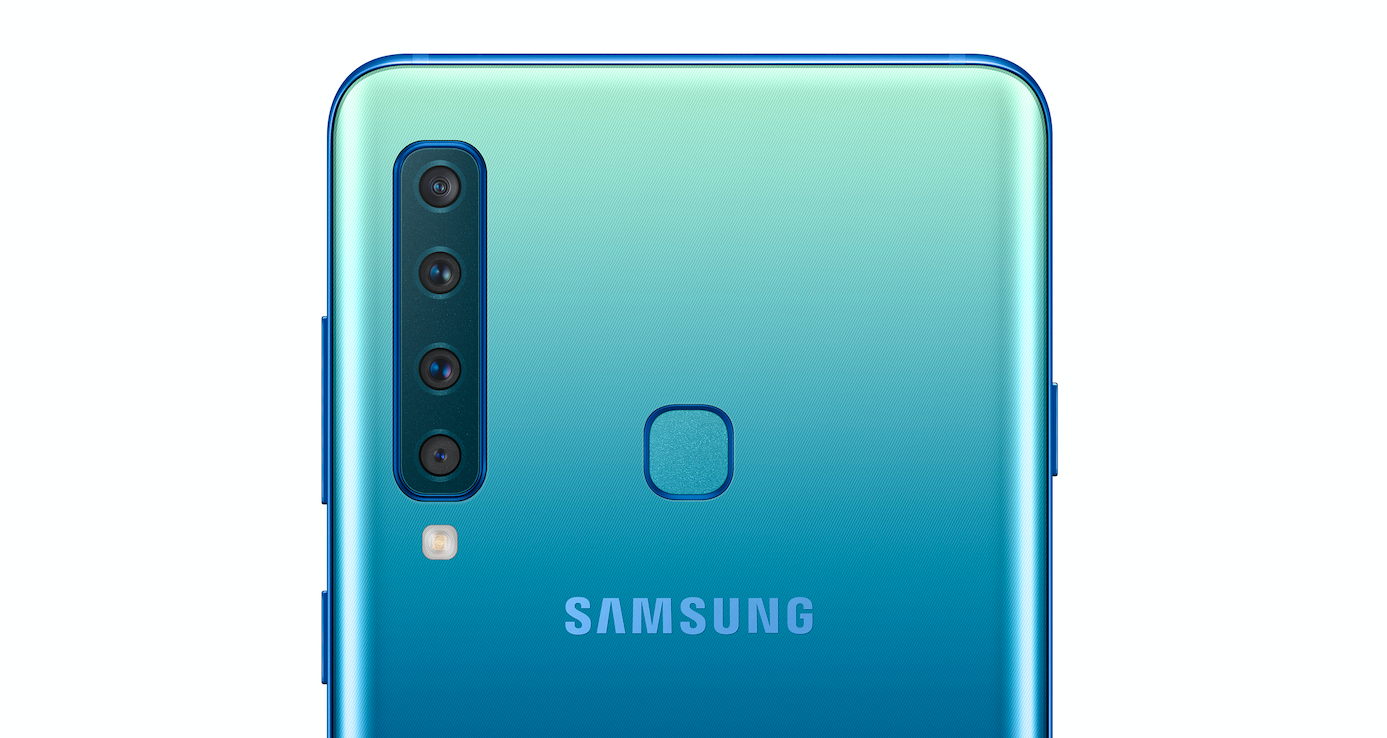Here's why the new Samsung Galaxy A9 has four rear cameras
Samsung has just announced the new Galaxy A9, a mid-range smartphone which has a total of five cameras — one on the front for selfies, and no fewer than four on the back.
The smartphones comes just two days after Google revealed its Pixel 3, which has just a single rear camera, plus two on the front.
Read More:
The A9 is the first phone to take Samsung's mid-range handsets in a new strategic direction, where they will include features not yet rolled out to the company's flagship, like the Galaxy S9 and Note 9.
Naturally, the rear camera is the star of the show. From top to bottom, we have the main 24-megapixel f/1.7 camera, followed by an 8-megapixel f/2.4 camera with a 120-degree wide-angle lens. Next there is a telephoto f/2.4 lens with 2x optical zoom and a 10-megapixel sensor, and finally there's a 5-megapixel f/2.2 camera which is used as a depth sensor to create images with blurred backgrounds and other depth-of-field effects.
The fifth and final camera sits on the front and has a 24-megapixel sensor with f/2.0 aperture.
Although not intended to compete directly, the A9 and Pixel 3 both show the two very different approaches being taken by Samsung and Google, with the former opting for extra cameras and the latter instead relying on artificial intelligence to produce photos.
The Galaxy A9 also includes the same Scene Optimizer technology as debuted on the Galaxy Note 9, where the phone uses artificial intelligence to analyze the scene and adjust the camera's settings accordingly. The feature recognizes when you point the camera at food, for example, or when you're taking a photo of the landscape, or a group of people.
Samsung describes the A9's camera technology as "world-leading," further emphasizing the company's desire to fit its mid-range handsets with flagship features.
This is a bid to lure in younger buyers on smaller budgets, and consumers from developing markets who don't want to spend $1,000 on a smartphone, but still want a device with standout features. The strategy is also a move to fight back against aggressively priced and highly-specced Chinese alternatives from the likes of Huawei, Honor, Xiaomi and OnePlus.
The rest of the handset is more in line with what you'd expect from a mid-range phone. It has a 6.3-inch display with Full HD resolution, 6GB of RAM and 128GB of storage, plus NFC for contactless payments, and Android 8.0 Oreo. An update to Android 9.0 Pie will likely come along in 2019, with Samsung being one of the slowest at updating its phones to Google's new operating systems.
The Galaxy A9 is available in black, blue and pink — or, as Samsung calls them, Caviar Black, Lemonade Blue, and Bubblegum Pink.
Prices start from €599 in Europe and £549 in the UK (approximately $715), with U.S. prices yet to be announced; it will go on sale in November.
